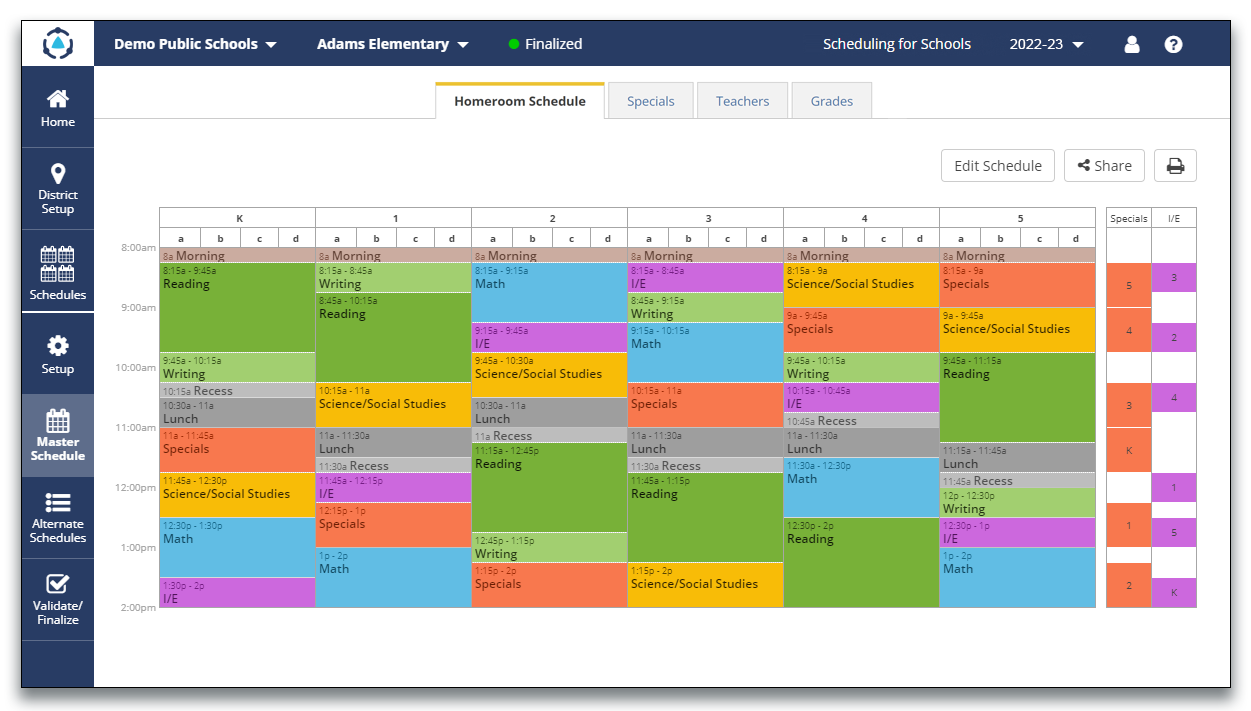
Building an Elementary Schedule - Part 1: Setting Up Your Team
This 12-part series on How to Build an Elementary School Schedule offers step-by-step guidance and proven scheduling strategies for creating a better elementary school schedule.
It is never too early to think about next year's elementary school schedule. Early preparation and planning are essential for successful scheduling. To get started, follow these six steps in the spring:
1. Put together a scheduling team
Making an elementary schedule involves many interdependencies that are easy to overlook. The best way to avoid this is to approach scheduling as a team sport. To start with, identify and assemble a strong scheduling team. The scheduling team often includes grade-level teachers, special education teachers, interventionists, and related services staff.
2. Set clear goals and instructional priorities
When it comes to your schedule for this year, what is your top priority? What has worked well in the past and what could be improved? Gather feedback from teachers to identify two or three items for improvement. Prioritize those items. It is much easier to manage scheduling trade-offs when you start with clear goals and priorities.
3. Get started early
Setting goals and priorities early (e.g. January) will enable you and your team to revisit scheduling guidelines, update scheduling tools, and explore different approaches to achieving your goals. An early start gives your team more time to address challenges, collect feedback, and adjust. This often results in a better schedule than one that simply makes everything “fit.”
4. Define roles and responsibilities
Having clearly defined roles and responsibilities for your scheduling team and staff helps everyone understand how they contribute to schedule creation. In addition, this supports accountability for schedule creation and adoption.
5. Gather all the necessary information
What are your projected enrollment numbers per grade? Is there a new or changing curriculum for the coming school year? What are your guidelines for reading, math, and specials minutes? Are you sharing teachers or staff with other schools? Are there additional staffing considerations?
6. Create a timeline
Establish a timeline for the creation of a schedule that includes initial discussions and feedback, as well as final drafts and revision support. This timeline should include milestones for finalizing instructional guidelines, establishing goals and priorities, drafting initial and final school schedules (including English Language Arts, Math, and Intervention blocks), general education teacher schedules, and student support schedules (special education teachers, related services staff, English language learners, etc.).
Need Support with Scheduling?
DMSchedules Can Help.
The key to scheduling success is preparation and planning. Start taking action now so that you and your scheduling team are well-positioned for success this scheduling season. If you need help building your elementary school schedule, reach out to us. We can take scheduling off your plate, and create your school schedule aligned with your learning goals.

